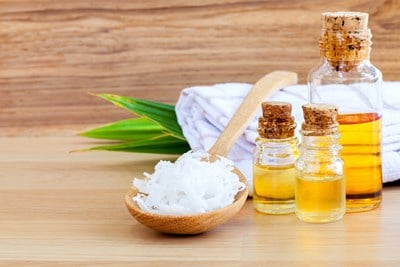Essential oils have been around for centuries, but they’ve recently started growing in popularity across the country. They can be used as a sort of alternative medicine to treat illnesses or as an alternative beauty product to treat cellulite, dry skin, and more. There are many different kinds of essential oils, and each have their own special healing properties. Before you start incorporating these oils into your life, we’ll give you a rundown of the basics:
What are essential oils?
An essential oil is defined as a “concentrated hydrophobic liquid containing volatile aroma compounds from plants (http://livesimply.me/2014/06/24/beginners-guide-essential-oils/).” These oils are distilled from either the leaves of different plants or the seeds. Essential oils are highly concentrated, so it takes a massive amount of the plant or seeds to create just one oil. This works out for you, though, as the oils are very powerful, so you only need to use a tiny amount at a time. Some of the most popular oils include: coconut oil, tea tree oil, peppermint oil, lavender oil, eucalyptus oil, and thieves oil.
What’s the difference between essential oils and extracts?
A common misconception is that essential oils and extracts are the same thing when they are actually quite different. They are derived from plants in different ways, and each have their own specific uses. Essential oils are distilled from plants, generally through steaming, while plants must be cold pressed, macerated, or soaked in a liquid, like alcohol, to get an extract. While essential oils are used for medicinal or beauty purposes, extracts are primarily used in perfumes, or sometimes in cooking, such as vanilla extract.
How are essential oils used?
There are three main ways to use essential oils: through inhalation, topically (applied to the skin), and orally. One of the best ways to reap the benefits of essential oils is to inhale them using an oil diffuser. This type of use is called aromatherapy, and inhaling oils such as lavender, eucalyptus, and peppermint can aid in relieving nausea, alleviating anxiety, and encouraging sleep. Many essential oils can also be used topically, usually to relax you or moisturize and tighten your skin. For example, rub chamomile, lavender, and peppermint oil into your temples to alleviate stress. Most essential oils aren’t created for consumption, but a few can be safely consumed, like peppermint, lemon, and basil essential oils.
Where can essential oils be purchased?
Not all essential oils are the same; different oils from different companies can have varying standards and purity grades, so be sure to check and make sure the oils you are buying are 100% pure. You can buy these oils at your local grocery store, on online marketplaces, like Amazon, through wellness centers, such as GNC, or from manufacturers themselves, like doTerra. You will probably want to shop around a bit to see where you can get the best quality for the lowest price.
Do essential oils have any dangers?
The main concern with essential oils is that you can potentially have an allergic reaction or sensitivity to the oils, so before you start slathering it on your skin, rub a small drop onto a small area of your skin and wait a few hours to make sure you won’t have an adverse reaction to it. Another concern with these oils is that people may try to ingest all of these oils while only a few of them are safe for consumption, so check the label before putting any of these in your food or drinks.



